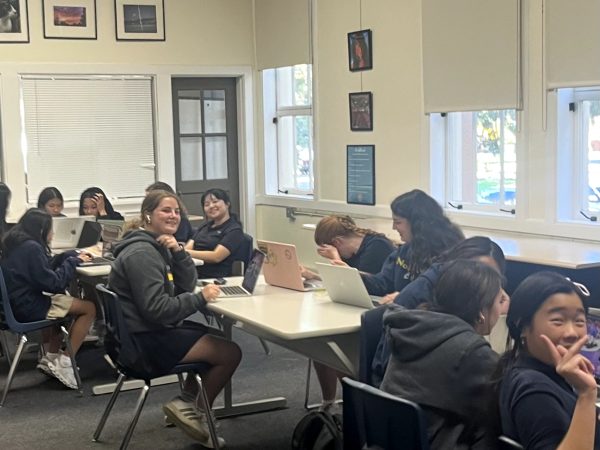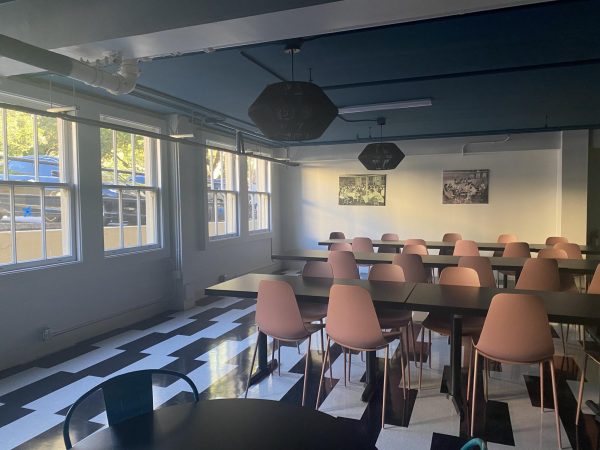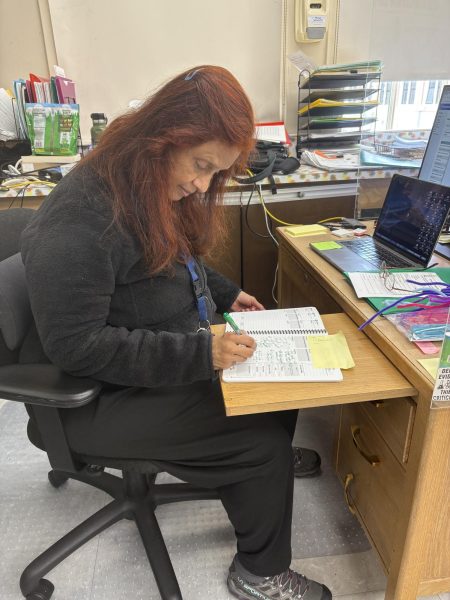My eyes are burning: The negative effects of extended screen time

The Catalyst / Charl
Paige Clarke wears blue light glasses to prevent eye strain after long days in front of the computer.
While distance learning wouldn’t be possible without our devices and technology, extended screen time can be the root of many possible problems.
Lately, we’ve all been spending more time on our screens due to COVID-19-related shutdowns. Thanks to the accessibility of technology, students and teachers especially have been on their devices for an increased amount of time due to distance learning and homework. Technology is such a major factor in our daily lives, so we wouldn’t think much of a few extra hours on our devices. However, while attending classes on our computers may be convenient, it does come at a serious cost.
Looking at screens for too long can potentially cause many negative physical effects. Eye strain is one of the biggest effects of prolonged screen time, as it causes dry or watery eyes, blurred or doubled vision, headaches, and trouble concentrating or keeping your eyes open (Healthline). Sleep deprivation is another major side effect of extended screen time, and when you continuously aren’t getting enough sleep, it can cause health problems such as fatigue and the inability to fight off infections (Medical News Today). Body aches and pains are also a very common side effect, and are usually caused by being tired, worn out, or stressed (Medical News Today).
Prolonged screen time doesn’t just have physical side effects, it can also affect one’s disposition, such as causing a change in mood or a loss of social skills.
When asked how the changes in screen time have affected her mood, sophomore Megan Cabral said, “With the increased amount of screen time, for me personally, when I’m just on my computer all day, I don’t feel like I’ve been as productive as I could have been, even if I am getting work done. It’s just different than physically writing something down.”
Unfortunately, students don’t have much of a choice as to how much time they spend on their devices for school each day. Would less time on screens benefit one’s education?
“That’s a really interesting question,” Library Director Ms. Sarconi said. “Especially given the fact that we don’t have a choice right now with COVID-19 happening. Ideally, I think it’s better to be in the classroom and only using devices as needed like we did in the past. But since that’s not really an option, I think another way of looking at it is what can we do to take care of ourselves during this time when we have to be on our devices.”
Despite the many negative effects of screen time, there are a few solutions that can help solve this problem and help you take care of your health. One of these solutions is the 20-20-20 rule, recommended by Sarconi. According to Healthline, the rule states every 20 minutes spent using a screen, you should try to look at something that is 20 feet away from you for a total of 20 seconds, as any break from consistent computer work is beneficial. You can also try handwriting or printing out your work, if you have access to a printer, to give your eyes a break from the screen. You can also buy unprescribed or prescribed Blue Light glasses, which filter out blue light from your screen with a special lens coating.
Although we need our devices to continue our daily lives from home, looking at screens for an extended amount of time can cause various physical and mental health issues. As a result, it is very important for you to find solutions that will benefit yourself and keep you healthy.

Eva Nichter is a senior at NDB and is one of the News Editors for the Catalyst. This is her third year as a student writer for the newspaper. In addition...





